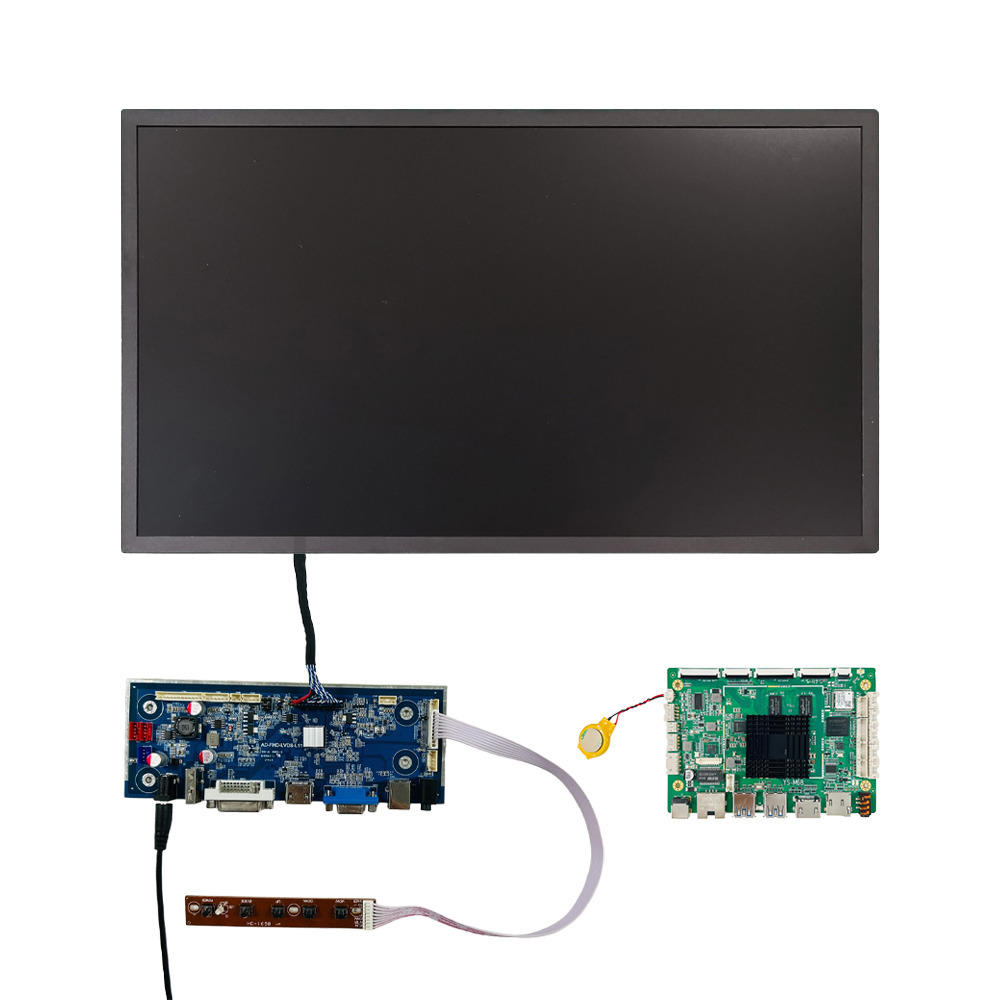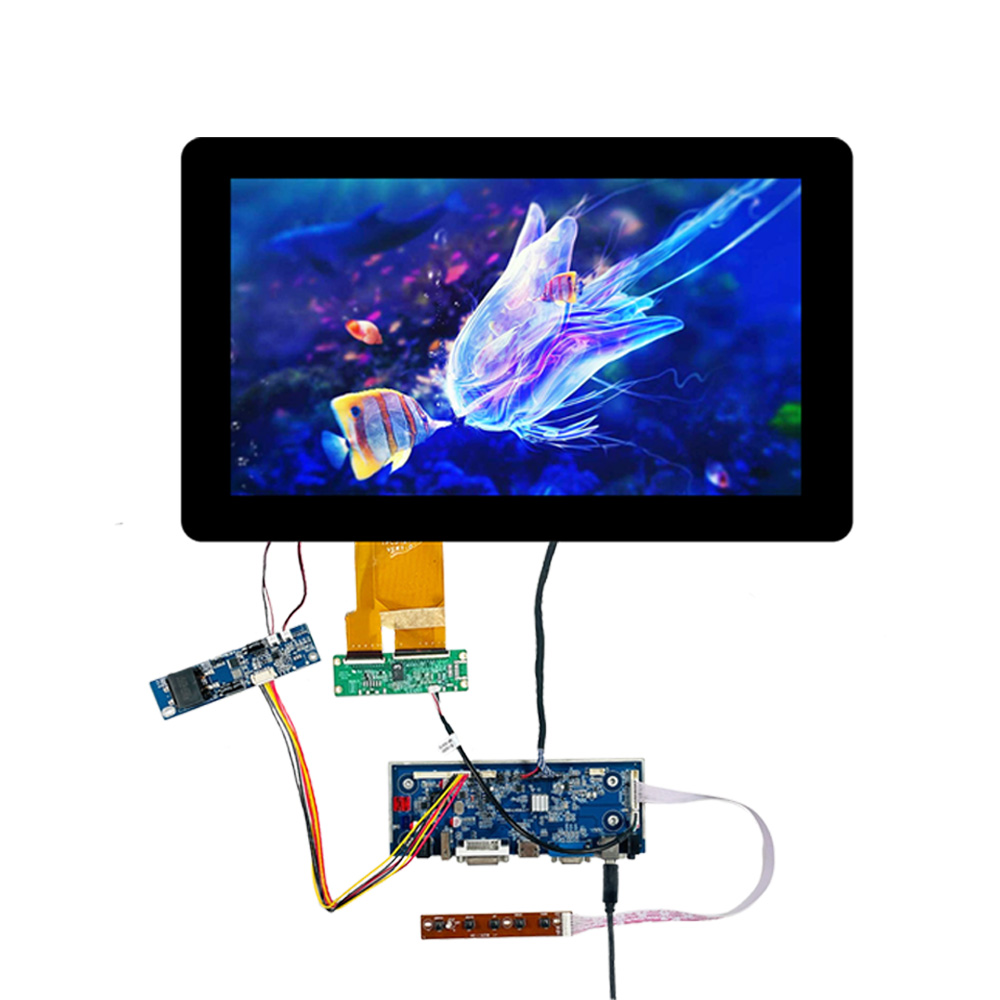Precision Visuals for Healthcare: The Next Generation Display Module for Medical Equipment
In today’s fast‑evolving healthcare and medical device landscape, the demand for ultra‑high clarity, reliability and performance continues to surge. Addressing this need, we present a state‑of‑the‑art LCD module designed especially for medical equipment integration: the 32‑inch 3840 × 2160 (4K UHD) module. Featuring model number DBT320DZN51E050B from Duobond Display, this medical‑grade display offers exceptional visual performance for surgical, diagnostic and image‑intensive applications.
Product Highlights and Technical Capabilities
This 32‑inch 4K LCD module supports a resolution of 3840 × 2160 pixels, which delivers four times the pixel count of full HD. The active area measures approximately 697.3 × 392.2 mm with an overall outline dimension of 725.2 × 422.7 mm. It features a brightness of 500 cd/m², a contrast ratio of 1500:1, a typical optical response time of 14 ms, full‑color support (16.7 million colours or 10‑bit input, 8‑bit+FRC output) and an 8‑lane eDP (Embedded DisplayPort) interface.
In practical terms, these specs translate into very fine detail, smooth colour gradients, and the reliability required for medical imaging environments. The anti‑glare surface (3H hardness, haze 25%) helps ensure clarity in bright lighting conditions such as operating rooms, diagnostic labs and similar clinical settings.
Reliability is built in: the module is rated for operation from 0 °C to +50 °C, uses an LED backlight with a lifespan up to 30,000 hours, and is fully RoHS‑compliant.
From an engineering and integration standpoint, this display is clearly geared for OEM partners in the medical equipment field. It offers high‑speed stable connectivity, uniform brightness and minimal colour shift (X,Y < 0.2), making it well suited for regulated environments.
Application Scenarios in Medical Equipment
The unique capabilities of this module make it ideal for multiple healthcare equipment contexts:
-
Surgical and Endoscopic Monitors: In minimally invasive surgery (MIS), laparoscopic, arthroscopic or robotic‑assisted procedures, the visual output must be crisp, real‑time and colour‑accurate. The 4K resolution allows fine anatomical structures to be presented with clarity, reducing surgeon fatigue and enhancing procedural confidence. The anti‑glare surface and high brightness further improve visibility in illuminated operating room conditions.
-
Radiology & PACS Workstations: Diagnostics such as CT, MRI, PET and X‑ray generate very high‑resolution image data. A module capable of 4K resolution ensures that subtle anatomical or pathological details are presented without the need for excessive zooming or panning. The OEM integration approach enables display in workstations or consoles designed for radiologists and clinicians analyzing image series.
-
Medical Equipment Consoles and Instrumentation: Many modern devices integrate displays — whether for intraoperative imaging, patient monitoring, ultrasound systems, or simulation training environments. This module supports those applications by offering both size and fidelity tailored to medical workflows.
-
Medical Simulation & Training: High‑fidelity simulation requires displays that closely replicate real surgical or diagnostic visuals. This module’s resolution, reliability and size make it suited to training labs, simulation suites, and educational setups where image realism matters.
Extending to a Series of High‑Resolution Modules: 4K~8K
While this 32‑inch 4K module addresses a broad range of current medical equipment needs, the display industry is already forging ahead to higher resolutions and larger form‑factors to meet future demands. The shift to 4K and 8K displays in medical settings is being driven by increasing image complexity, higher precision requirements and more advanced workflows.
What this means for OEMs and system integrators: offering a product line that includes 4K modules like this one and extends into 8K (7680 × 4320) or higher will position equipment manufacturers ahead of the curve. When medical imaging modalities become more advanced, e.g., ultra‑high resolution CT, MRI with higher slice count or AI‑enhanced imaging, the display partner must be ready.
From a development viewpoint, having a modular series means you can address incremental customer demands: currently many systems require 4K, but tomorrow’s applications may require “super‑4K” or 8K with HDR, higher refresh rates, wider colour gamut, or multi‑view formats. By aligning with such a roadmap, equipment manufacturers can future‑proof their platforms.
For instance, the product in question is a strong foundation for that roadmap: as part of a series of medical‑grade LCD modules from the supplier, customers can expect flexibility in size, brightness, interface and resolution to match projected requirements. This means not merely a single component but a scalable visual subsystem strategy.
Market Trends and Industry Context
Understanding the broader market context is key to appreciating the strategic value of choosing a module like this. The global medical display market is projected to grow steadily over the next decade, driven by rising demand for advanced diagnostics, minimally invasive procedures, and digital healthcare solutions.
Several underlying drivers are identified:
-
The growing global prevalence of chronic diseases (oncology, cardiovascular, orthopaedics) and the resulting increase in diagnostic imaging demand.
-
A shift toward minimally invasive procedures and hybrid operating rooms, which require ultra‑clear visuals for precision and efficiency.
-
Digitalisation of healthcare workflows, increased use of telemedicine and remote diagnostics — all of which amplify the need for large high‑resolution displays and multi‑modality viewing.
-
Technological advancement: higher resolution (4K/8K), HDR, AI integration, LED backlighting, larger panel sizes and enhanced colour accuracy.
While developed markets such as North America currently dominate share due to mature healthcare infrastructure, emerging regions (Asia Pacific) are forecast to grow fastest thanks to rising healthcare investment.
From the ecosystem perspective, LCD technology continues to dominate in medical displays due to its established supply chain, reliability and cost balance — making it the preferred choice even as newer technologies such as OLED or microLED begin to emerge.
These trends underline why a medical‑grade LCD module with 4K resolution and specifications aligned to OEM needs represents a strategic investment for device manufacturers. By integrating such modules, OEMs benefit not only from current demand but also position their systems for future resolution upgrades and imaging innovations.
Why Choose This Module for Medical Equipment Integration?
Here are several compelling reasons why the DBT320DZN51E050B module is well aligned to medical OEM applications:
-
High Resolution & Clarity — With 3840 × 2160 resolution and high pixel density across a 32‑inch active area, it enables detailed visualization of anatomical structures, medical scans and procedural imagery.
-
OEM‑Ready Form Factor & Interface — Designed with a standardized 51‑pin eDP interface and robust outline dimensions, it streamlines integration into consoles, monitors and imaging systems.
-
Medical Environment Suitability — Anti‑glare surface, high brightness, durability (30,000 h LED backlight), wide operating temperature range and uniform colour/brightness performance match the demands of clinical settings.
-
Scalability for Future Needs — As part of a broader series of high‑resolution display modules (including potential 8K or larger size options), this module gives OEMs a forward‑looking platform.
-
Reduced Risk & Time‑to‑Market — By selecting a pre‑qualified medical‑grade module from a specialist supplier, device manufacturers reduce their engineering burden, accelerate development cycles and lower integration risk compared with designing a display subsystem from scratch.
How to Integrate this Module Successfully
For OEMs and medical device designers considering integration, here are practical tips:
-
Ensure mechanical compatibility: confirm outline dimensions (725.2 × 422.7 mm), active area and mounting scheme match the system design.
-
Signal & interface: the 8‑lane eDP interface supports stable 4K transmission — ensure the host board and firmware can support eDP signal integrity at required data rates.
-
Calibration and uniformity: given the diagnostic and surgical requirements, ensure brightness uniformity, colour accuracy, and minimal shift over temperature.
-
Environmental and lifecycle considerations: plan for adequate thermal management, dark‑room storage (18‑24 °C, 50‑70% RH recommended by the vendor) and handling guidelines to preserve lifespan and performance.
-
Compliance and verification: although the module is built for medical usage, OEMs should still perform system‑level verification — particularly where DICOM compliance, sterilisation compatibility, front‑glass integration or EMI/EMC requirements apply.
Conclusion & Call to Action
In summary, the DBT320DZN51E050B 32‑inch 4K LCD module is a high‑performance, medically‑oriented display solution tailored for today’s most demanding healthcare equipment applications. With superb resolution, robust medical‑grade specifications, manufacturer support and scalability into future high‑resolution series, it stands as a strategic choice for medical device OEMs.
If you are developing surgical monitors, diagnostic consoles, endoscopic imaging systems or next‑generation medical equipment and you require a reliable, high‑resolution display module, we invite you to click here to view full details and technical documentation.
For further information, integration guidance or customisation options, please feel free to contact our team. We look forward to partnering with you to deliver exceptional visual performance in your medical‑equipment solutions.
 2025-11-11105 Inch 5K CTP Touch All-in-One Machine for Indoor Digital Signage
2025-11-11105 Inch 5K CTP Touch All-in-One Machine for Indoor Digital Signage 2025-11-04Commercial Display Market Trends and the Growing Demand for LCD Modules
2025-11-04Commercial Display Market Trends and the Growing Demand for LCD Modules 2025-10-2928.6″ Bar LCD Display – Industrial Commercial Signage
2025-10-2928.6″ Bar LCD Display – Industrial Commercial Signage 2025-10-1518.5 Inch Wide Temperature Outdoor LCD Display — Tailored Display Solutions for Outdoor Advertising
2025-10-1518.5 Inch Wide Temperature Outdoor LCD Display — Tailored Display Solutions for Outdoor Advertising 2025-10-1523.1 Inch Bar LCD Display for Supermarket Shelf Solutions
2025-10-1523.1 Inch Bar LCD Display for Supermarket Shelf Solutions

-
Inquire
- Top


